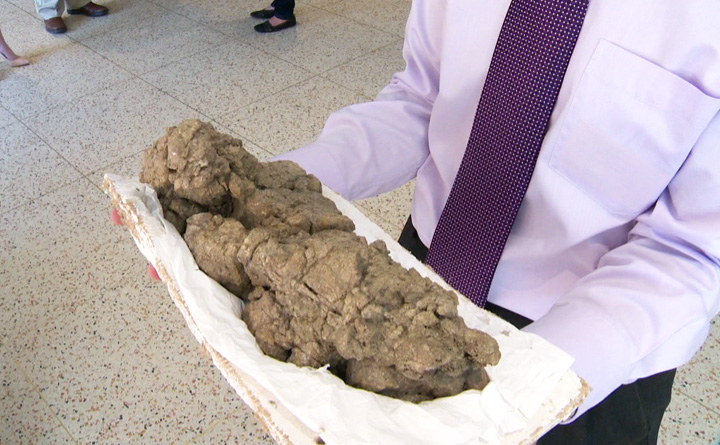REGINA – A museum in Saskatchewan is sending some very old poop to the Smithsonian Institution in Washington, D.C.

The fossilized feces from a meat-eating T. Rex was deposited 65 million years ago in what is now the province’s southwest.
The Royal Saskatchewan Museum is providing a replica of the dino poop, known as a coprolite, to the Smithsonian for an exhibit that is to open next year.
Bone fragments in the poop suggest the meal didn’t stay long in the dinosaur’s stomach.
Paleontologists say the fragments are shattered and angular instead of rounded and etched by acid – as they would be if more digestion had taken place.
They also say analysis shows the dino’s dinner that day was probably a juvenile duck-billed dinosaur or a horned Triceratops.
“What makes this specimen unique is that we can clearly identify it as coming from a meat-eating dinosaur, and the only species of that type of dinosaur living in the area at the end of the Cretaceous Period that was large enough to produce this coprolite was Tyrannosaurus rex,” Harold Bryant, director of the Royal Saskatchewan Museum said in a release Wednesday.
“This remarkable coprolite attributed to T. Rex from Saskatchewan provides wonderful confirmation that this was indeed a giant meat-eater, as had been inferred from its teeth,” added Hans Sues, who is the curator of vertebrate paleontology at the Smithsonian’s National Museum of Natural History.
“We want to show our visitors that paleontologists do not just work with fossil bones and teeth, but can also draw on other lines of evidence such as coprolites and tracks to reconstruct the life and times of ancient back-boned animals.”

Comments